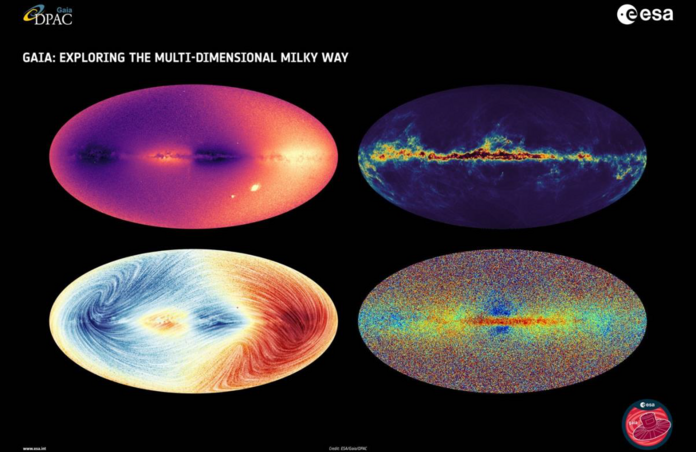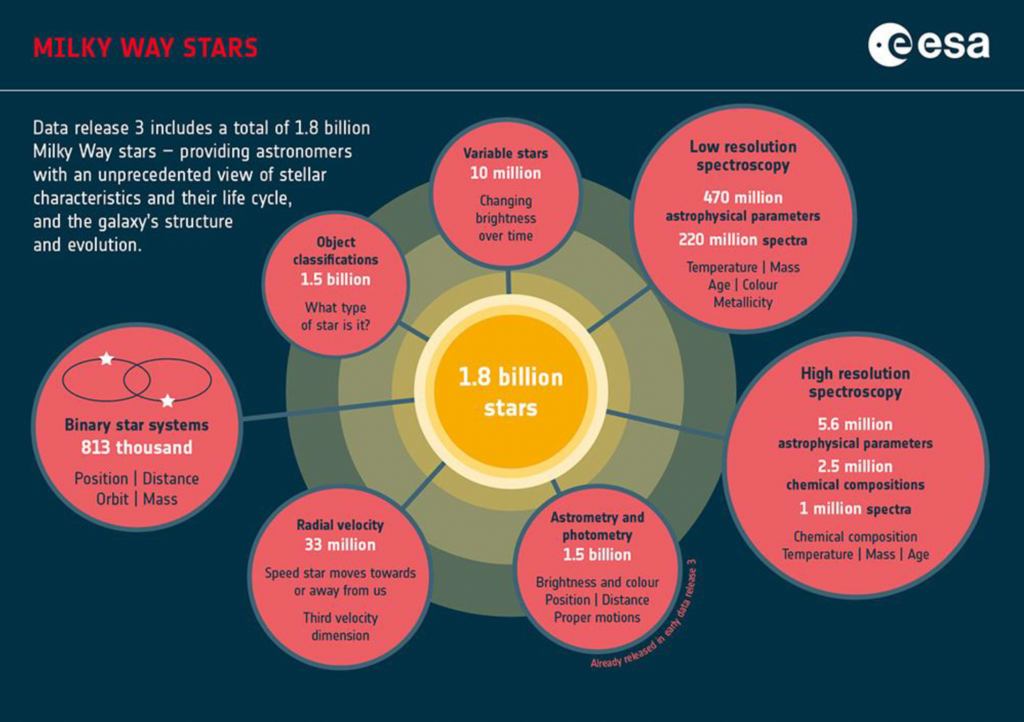New Gaia data reveals strange starquakes

The European Space Agency’s Gaia mission has released its third data set, creating ‘the most accurate and complete multi-dimensional map of the Milky Way yet’ along with quite a few interesting discoveries being made by astronomers from this exciting data.
The sky-mapping satellite was launched in 2013, and has since released three data sets increasing in precision with information about the ages, masses, luminosity and chemical composition of around 2 billion stars throughout the Milky Way and beyond, along with subsets of solar system objects and extragalactic sources. Gaia provides data which is needed to tackle some of the most vital questions about our galaxy such as its origin, structure and evolutionary history, and will allow astronomers to look billions of years into the past and future.
Gaia orbits about Lagrange point 2, a point where a small mass will stay put given the balance in forces of two massive bodies which in this case are the Earth and sun – a given lock point, if you will. The satellite scans the entire sky every 2 months, equipped with a 10m circular sunshield along with two telescopes 106 degrees apart. These telescopes project incoming light onto a 1-billion-pixel camera, capturing even the faintest details which astronomers can use to determine a number of important parameters.
What does this new release tell us?
The newest data set released on the 13th June provides the extremely detailed information of 2 billion stars. Using the technique of spectroscopy – splitting incoming starlight into different colours – a number of properties were determined such as chemical composition, stellar temperature, colour, mass, age and radial velocity. This new highly improved data comprises galaxies, quasars outside of our galaxy as well as subsets of variable stars. Additionally, the ESA mission has been extended to binary stars, presenting the masses and evolution of over 800,000 binary systems leading to the largest catalogue of binary stars yet along with the asteroid survey covering 156,000 of these rocky objects.

One of the most intriguing discoveries Gaia has made from the new data is the detection of starquakes. Previous data releases have uncovered radial oscillations that cause stars to shrink and swell periodically without changing the shape of the star. However, data release 3 has discovered other vibrations akin to large-scale tsunamis which change the stars’ shape, giving rise to periodic changes in brightness. This fascinating discovery goes against the current theory which states that these stars should not experience quakes and could be a potential ‘goldmine’ for the asteroseismology of massive stars.
Gaia is expected to release one last dataset before publishing a complete analysis of all data collected by the satellite, and perhaps further data may uncover many more enthralling discoveries about our galaxy and beyond.
--
Cover Image:
Radial velocity, interstellar dust, radial velocity and proper motion, and chemical maps made using Gaia’s release 3 data. Image credit: ESA/ Gaia / DPAC.
References:
July 2018, E.H. 28 (n.d.). Gaia: Mapping a Billion Stars. [online] Space.com. Available at:
https://www.space.com/41312-gaia-mission.html [Accessed 15 Jun. 2022].
Sky & Telescope. (2022). The Gaia Revolution: New Data and Strange Stars. [online]Available at: https://skyandtelescope.org/astronomy-news/gaia-revolution-new-data-strange-
stars/ [Accessed 15 Jun. 2022].
